This article is written by LXDAO Member Howe, and it uses a timeline format to help everyone understand the background of the BTC asset issuance plan. Before reading, you can take a look at the BTC historical development timeline and the BTC asset issuance plan development timeline for a better reading experience.
Preface
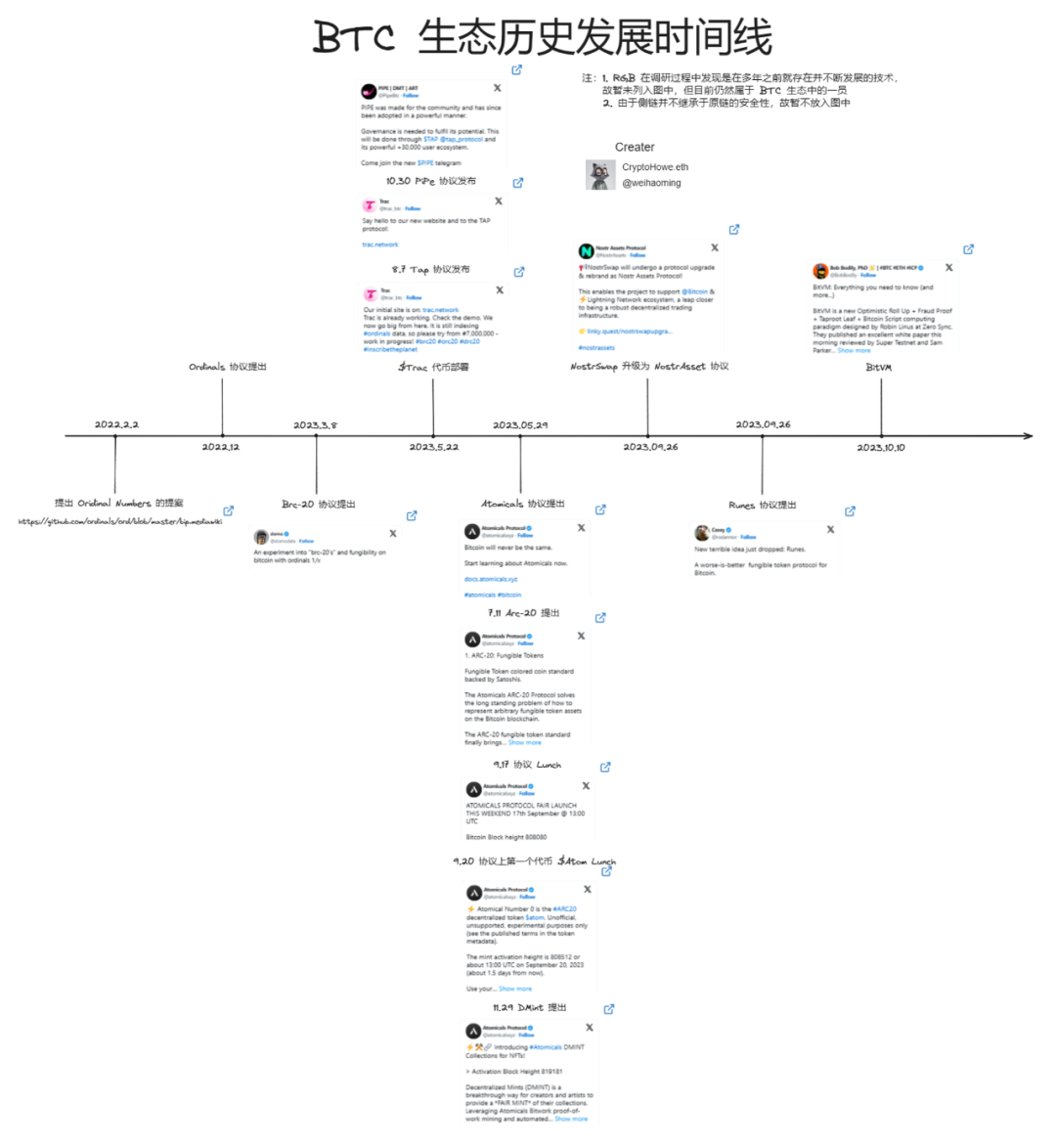 BTC historical development timeline
BTC historical development timeline
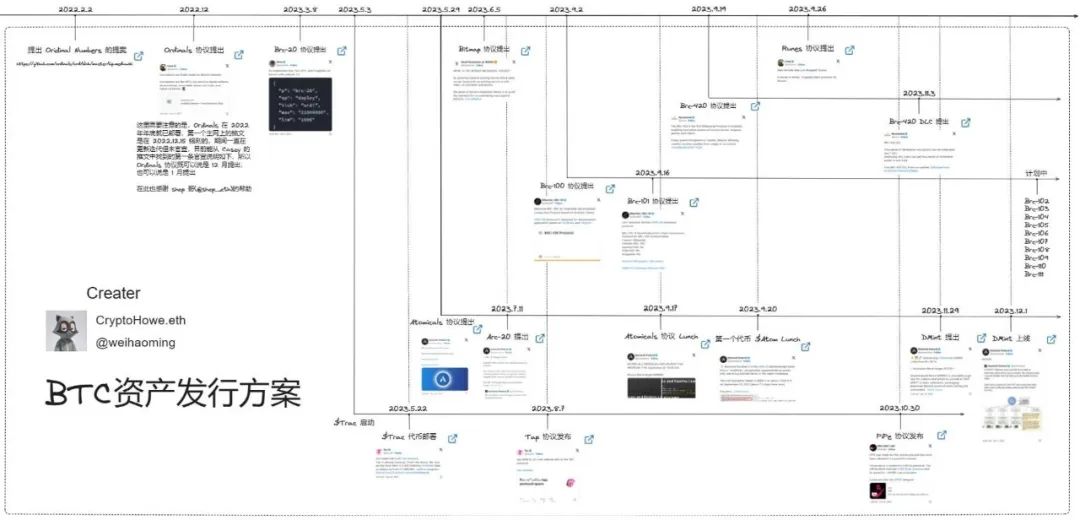 BTC asset issuance plan development timeline
BTC asset issuance plan development timeline
This article also refers to many other articles. The author found that some articles may have errors in the timeline of certain protocols/projects during the reference and research process. Therefore, all timelines in this article are accompanied by relevant materials. If there are any errors, please point them out to the author. Thank you.
Disclaimer: The tokens mentioned in this article are for learning and communication purposes only and do not constitute any investment advice. DYOR.
Chapters
Agenda
Chapter Ⅰ — The gears of fate start to turn
「1」Ordinal Numbers
「2」Ordinals Protocol
Chapter Ⅱ — The flourishing of BTC ecosystem asset issuance
「1」BRC-20 Protocol
「2」TRAC Systems
「3」Atomicals Protocol
「4」Bitmap Protocol
「5」BRC-100 Protocol
「6」BRC-420 Protocol
「7」Runes Protocol
Conclusion
#Chapter Ⅰ — The gears of fate start to turn
「1」Ordinal Numbers
Many existing articles start with the Ordinals protocol, but in the official documentation of Ordinals, the first mention is the Ordinal Numbers theory. From this, it can be inferred that Casey should have also gained some inspiration from it and created the Ordinals protocol.
It is well known that the smallest unit in the Bitcoin world is a satoshi (sat), and the Ordinal Numbers theory can be simply understood as artificially numbering these sats. From the motivation section of the BIP proposal, we can summarize that the theory aims to provide a way for Bitcoin to have a stable identifier to prevent ownership transfer or key rotation without making any changes to the Bitcoin network.
Of course, this theory also has some opposing views, such as reducing user privacy, increasing the size of the UTXO set, dust attacks, etc. For specific details, please refer to the BIP proposal.
「2」Ordinals Protocol
Protocol Proposal
The Ordinals protocol was proposed and released by Casey, who presented the following idea:
"Can we arrange these 'sats' in a certain order, assign them an ordinal number between 0 and 2,100,000,000,000,000, and then connect them to other information: images, text, videos, or even a piece of code? This makes each sat unique and irreplaceable. This is equivalent to giving Bitcoin the native ability to create NFTs."
The Ordinals protocol was deployed by the end of 2022, and the first inscription on the mainnet was engraved on December 14, 2022, UTC (https://ordinalswallet.com/inscription/6fb976ab49dcec017f1e201e84395983204ae1a7c2abf7ced0a85d692e442799i0). During this period, the protocol has been continuously updated and iterated without official announcements. Currently, the first official announcement tweet that can be found from Casey's Twitter is as follows, so the Ordinals protocol can be considered to have been proposed in December or January. (Here, thanks to the clues provided by Brother Shep.)
Protocol Features
1. Numbering and rarity division of sats
Humans are natural collectors. Since Ordinal Numbers are artificially numbering sats, why not differentiate these sats by rarity? Currently, rarity is divided into 6 categories:
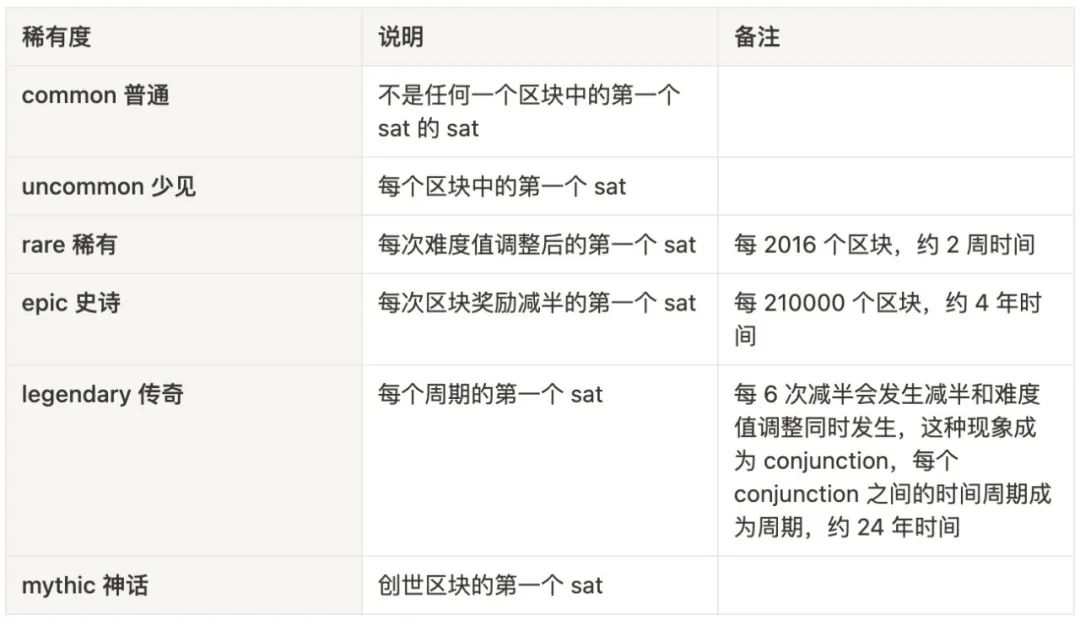
This rarity is similar to what we call "lucky banknotes" or "consecutive number banknotes" when playing with paper money in real life. In essence, they are all banknotes, and their actual value is the face value of the banknote. However, because people have given them special meanings, they have higher collectible value and therefore a premium, which is what we often call "consensus creates value."
In addition to tracking the specific rules and numbers assigned to each sat in transactions, the Ordinals protocol also allows anyone to attach additional data such as images, text, videos, audio, etc. through the Ordinals protocol. In the early days, many players were more focused on creating NFTs on it. The initial positioning of the founder, Casey, was also to allow people to store something eternal on the oldest and most consensual chain of Bitcoin. So for a period of time, many people equated Ordinals with "Bitcoin NFTs." Even today, we can still see their presence in the Unisat Wallet.
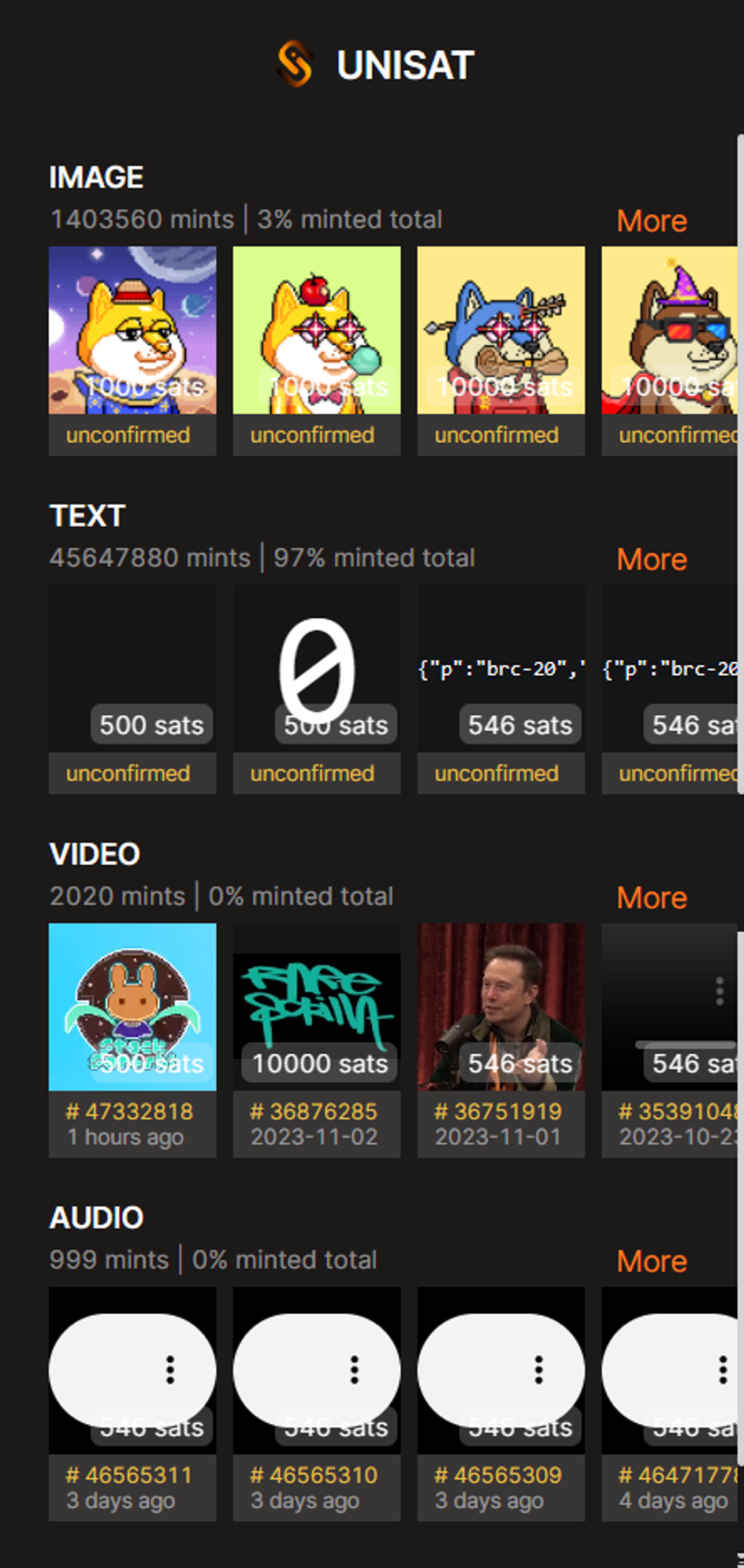
2. First in, first out transactions
To ensure that sats with ordinal numbers do not get mixed up during transactions, a first in, first out approach is adopted. Here is an example from an article by Professor Wang Yishi (https://yishi.io/a-beginner-guide-to-the-ordinals-protocol/) to explain this feature:
In the transaction below, there are two inputs on the left, with addresses 1 and 2 having a total of 5 sats. In this transaction, 4 sats are sent to an address starting with 3oPz, and the remaining 1 sat is used as a miner fee.
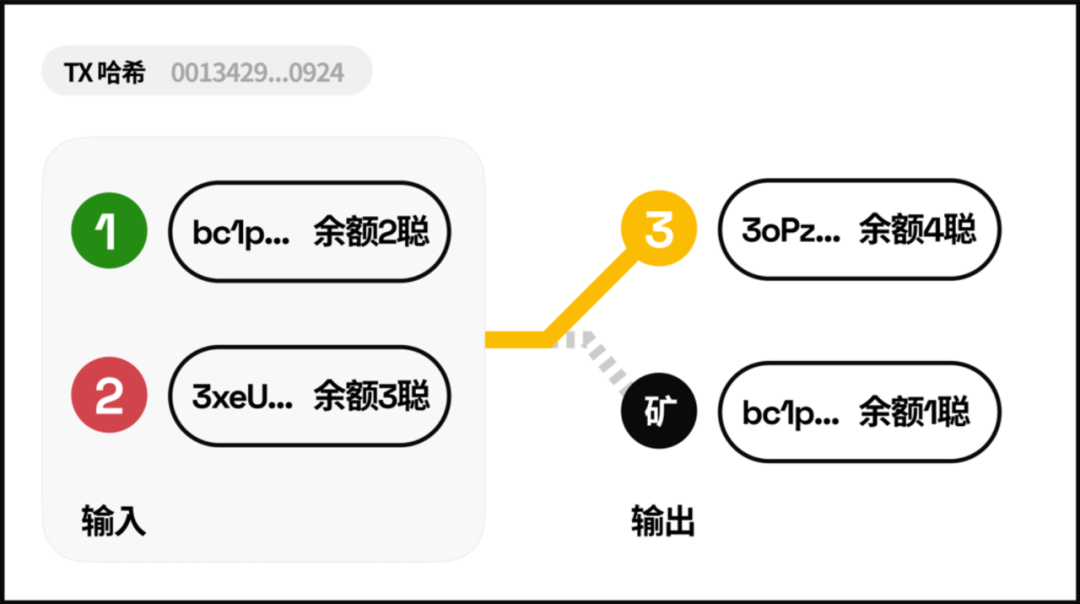 Source: https://yishi.io/a-beginner-guide-to-the-ordinals-protocol/
Source: https://yishi.io/a-beginner-guide-to-the-ordinals-protocol/
Assuming that we secretly use the Ord protocol to assign an identity (ordinal number) to each sat, after the transaction is completed, the 4 numbered sats from addresses 1 and 2 (Ord A->D) will end up at address 3, and the last sat will go to the miner.
The so-called "first in, first out" means that the numbering and ordering of each sat are determined by its index in the transaction output. For example, in the transaction output in the image below, address 3 is placed before the miner address. Therefore, the sats transferred from addresses 1 and 2 are inherited by address 3 first, and then by the miner address.
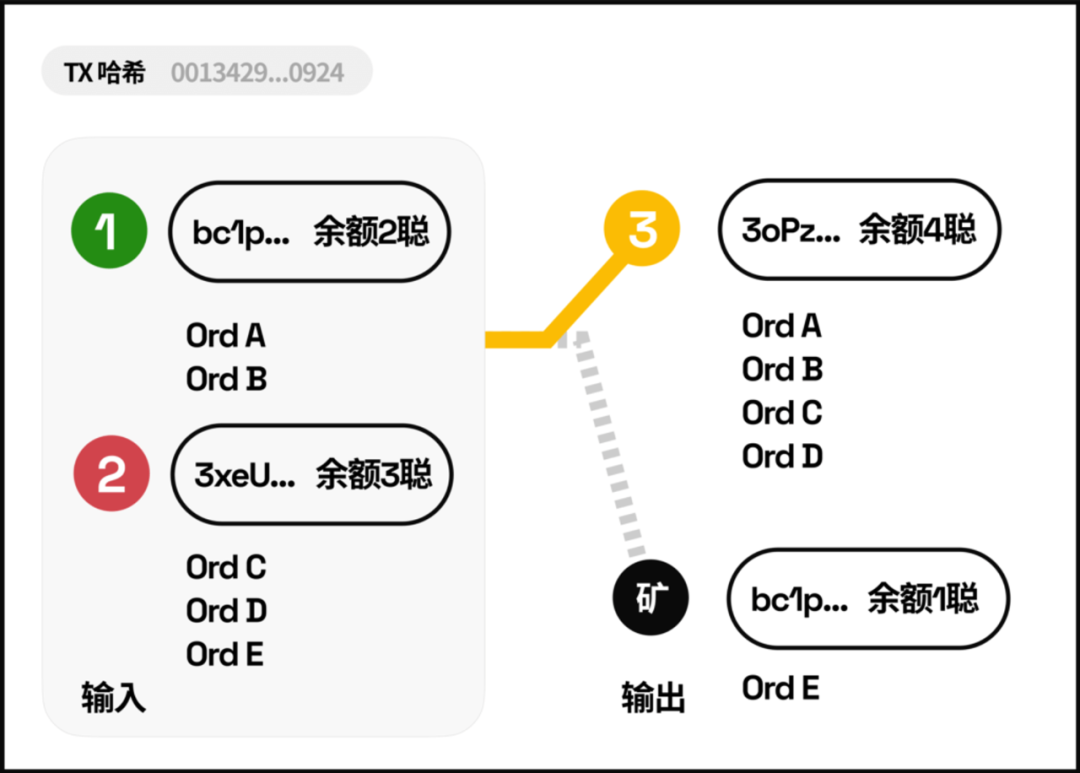 Source: https://yishi.io/a-beginner-guide-to-the-ordinals-protocol/
Source: https://yishi.io/a-beginner-guide-to-the-ordinals-protocol/
Protocol Principles
For friends who are familiar with Bitcoin, they know that Bitcoin was born as a peer-to-peer electronic cash system, and its programming language is a non-Turing complete scripting language. Therefore, it is almost impossible to achieve some complex functions. However, the two major updates to BTC in 2017 and 2021 have enabled us to implement some functions with complex logic on BTC.

Source: https://twitter.com/blockpunk2077/status/1719321676989771801
Based on the above development premise, the Ordinals protocol achieves the viewing and transfer effects of its inscriptions by writing the inscription content into Taproot scripts and using UTXOs. Since Taproot script spending can only be done from existing Taproot Outputs, a two-stage commit/reveal process is used to achieve the inscription. First, in the commit transaction, a Taproot Output containing the inscription content script needs to be created. Then, in the reveal transaction, the previously created commit transaction is spent, thereby revealing the content of the inscription on the chain. During this process, the content of the inscription needs to undergo a series of serialization:
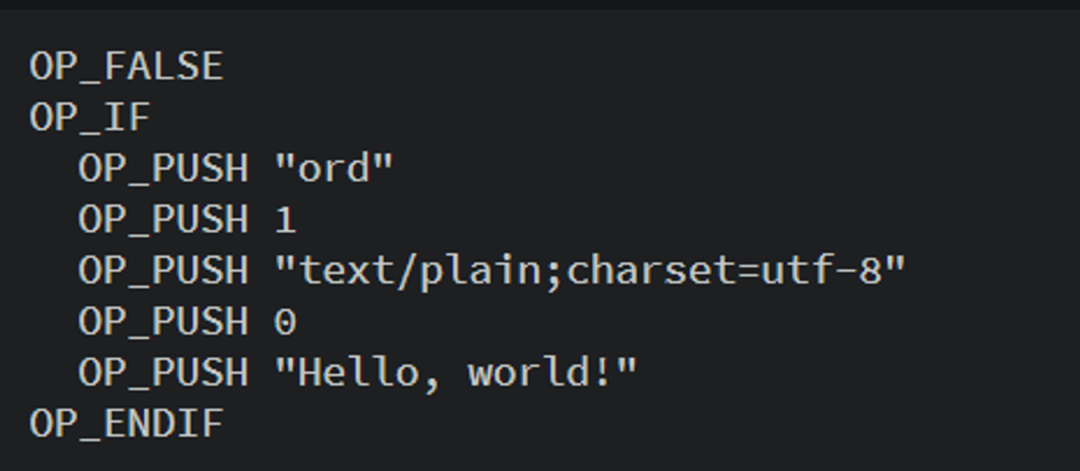 Source: https://docs.ordinals.com/inscriptions.html
Source: https://docs.ordinals.com/inscriptions.html
In simpler terms, this is like initiating a WeChat transfer. During the transfer, we need to include the content of the inscription in the remarks (Taproot Output), and then send the transfer**(spend the commit transaction). After the transfer is completed, we can reveal the content of the inscription in the chat box for the other party to see (reveal transaction). If the transfer does not include remarks or the transaction is canceled, the content of the inscription will not be recorded on the chain.
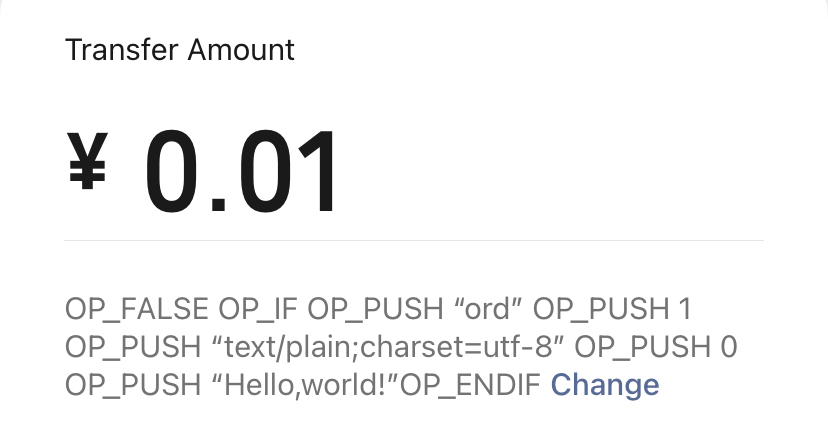
#Chapter Ⅱ — The flourishing of BTC ecosystem asset issuance
「1」BRC-20 Protocol
Protocol Proposal
After the release of the Ordinals protocol, early players were focused on NFTs. Anonymous developer domo then released an experimental standard on March 8, 2023, called the BRC-20 protocol, an improvement based on the Ordinals protocol, and officially deployed the first BRC-20 $ordi. This protocol allows anyone to issue tokens on the Bitcoin network, similar to the gameplay of ERC-20 tokens on Ethereum.
https://twitter.com/domodata/status/1633658974686855168
Note:
domo's earliest tweet about BRC-20 was on March 9, 2023, but based on the deployment times of $meme and $ordi, it seems that it was already launched on March 8, 2023.
$meme was the first deployed BRC-20, while $ordi was the first officially released BRC-20, which can be inferred by checking their deployment times.
Regarding the development of $ordi, most people should have some understanding. Details can be found in the following tweet: https://twitter.com/Web3Loon/status/1731581279920123963
Protocol Principles
The BRC-20 protocol achieves the deployment, minting, and transfer of BRC-20 tokens based on the Ordinal theory by establishing a series of standards. The format standard of this protocol is derived from the Sats Name project (the first DID project based on the Ordinals protocol):
 Source: https://gamma.app/docs/Copy-of-Ordinals-and-Bitcoin-NFT-8xnob1mzvgup38w?mode=present#card-qm5vgu6uussxft9
Source: https://gamma.app/docs/Copy-of-Ordinals-and-Bitcoin-NFT-8xnob1mzvgup38w?mode=present#card-qm5vgu6uussxft9
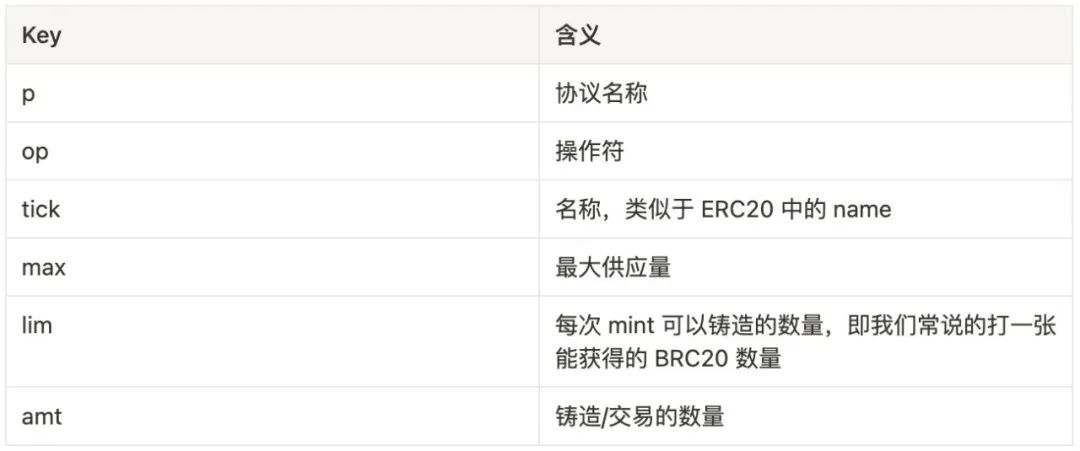
Similarly, in simpler terms, it's like initiating a WeChat transfer, but with different content in the remarks.
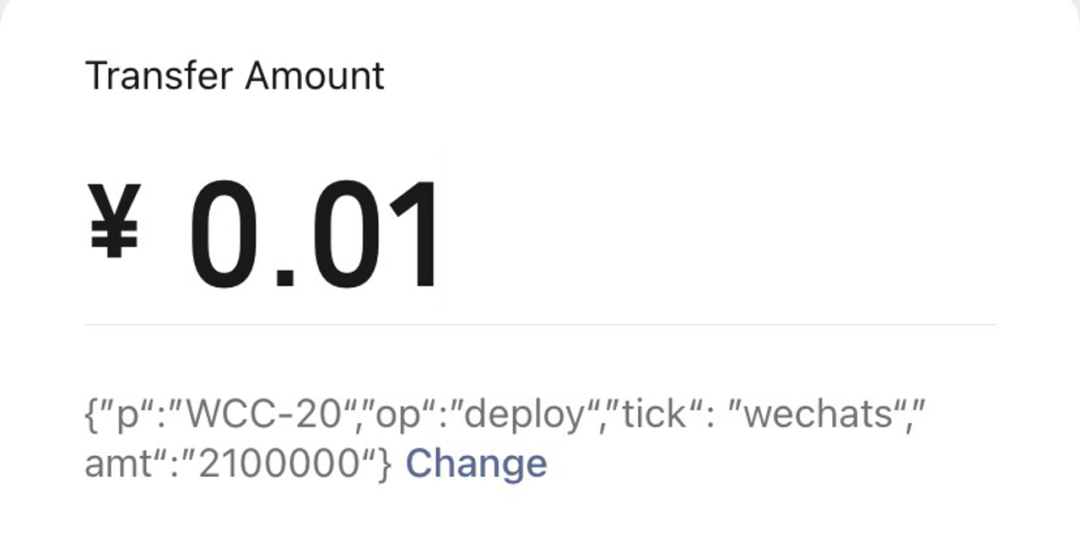
Extension
Although the BRC-20 protocol enables the free issuance of fungible tokens on the Bitcoin chain, the lack of an account model in Bitcoin and the fact that BRC-20 content is stored in Segwit's Taproot scripts mean that we cannot directly calculate the BRC-20 balance of each account on the chain. Therefore, the current approach is to build an index server off-chain to achieve token information retrieval, balance calculation, and transaction transfers for BRC-20 tokens, but this approach carries the risk of centralization.
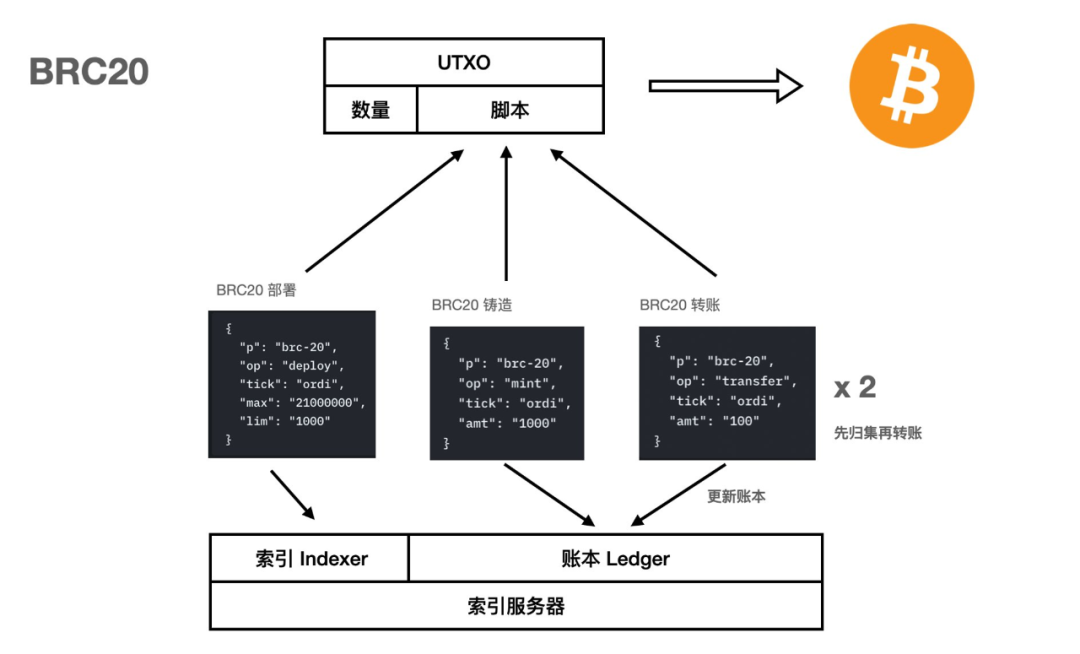
Source: https://twitter.com/blockpunk2077/status/1725513817982136617
First, it is important to understand the three main parts of the BTC layer 1 protocol: the protocol sets the rules for writing data on Bitcoin, the indexer provides the ability to query and parse this data, and the ledger records token balances and processes transfers.
For BRC-20, the indexer server first needs to identify each deployment of BRC-20 in order to read token information, which is referred to as "indexing."
Additionally, since the balances of BRC-20 tokens are encoded in scripts and cannot be recognized by the BTC network itself, the BRC-20 indexer server must maintain a local ledger to record BRC-20 token balances. Every time a transfer occurs, the local ledger needs to be checked to determine if the transaction can proceed (if there are enough tokens) and then updated.
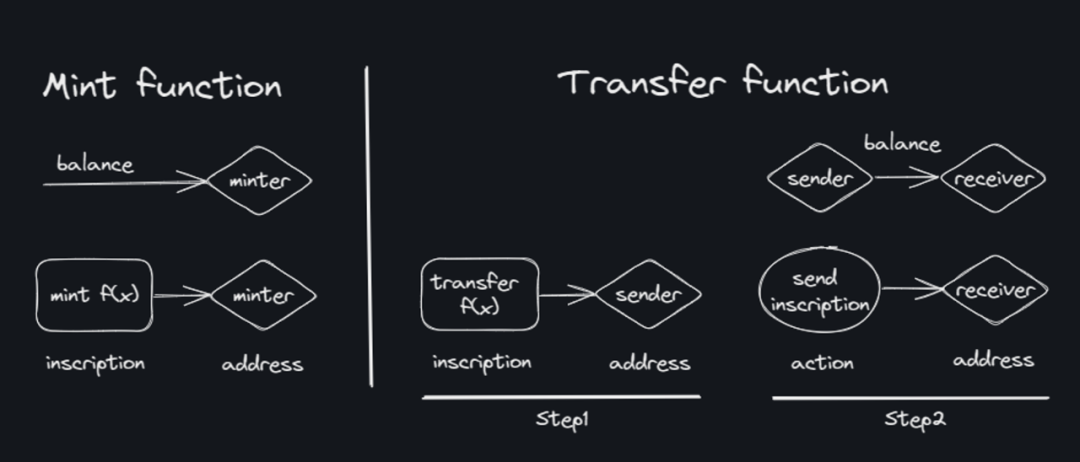
Therefore, when conducting transactions, BRC-20 requires two transactions:
- The first transaction reads the latest ledger data from the local ledger and calculates the balance.
- The second transaction completes the transfer.
The Ordinals protocol is essentially designed for NFTs, and the improved BRC-20 based on it has increasing complexity in transfers. The BRC-20 indexer also takes on the role of maintaining the ledger, which exists completely off-chain from Bitcoin. The indexer must accurately record every balance change to ensure the integrity of the ledger.
As a result, over time, the indexer's ledger will accumulate, and the pressure on nodes will increase. Without continuous incentives, the indexer may struggle to continue. If the indexer's ledger no longer provides services, BRC-20 will become completely unusable.
「2」TRAC Systems
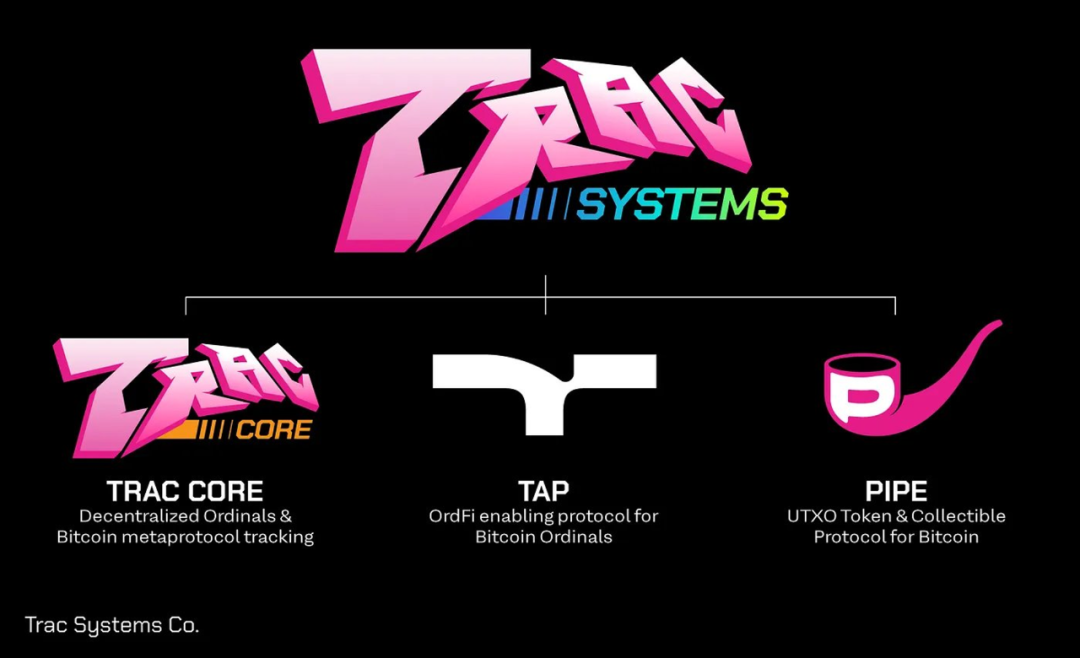 Source: https://twitter.com/trac_btc/status/1722648122269012428
Source: https://twitter.com/trac_btc/status/1722648122269012428
$TRAC
$TRAC is a BRC-20 Token launched by Benny on May 3, 2023, and officially deployed on May 22, 2023.
Trac Core
Trac Core is a Bitcoin inscription oracle and decentralized indexer that addresses issues related to indexing, retrieval, and price feeding of inscription ecosystem data.
For example, in terms of indexing, although inscription data is stored on the Bitcoin chain, this only includes information about the inscriptions. Data updates and checking balances rely on third-party centralized indexers, which are often criticized for security issues (e.g., Binance's ordi indexing error at the end of November). Therefore, Trac can significantly enhance the security of the inscription ecosystem by collecting, organizing, and sorting all data on Bitcoin, and it plans to introduce hundreds of indexer nodes in the future.
As the number of nodes increases, Trac Core also integrates the role of an oracle, obtaining necessary reliable data from external sources to input into the blockchain. This forms the basis for building native inscription DeFi and other upper-layer protocols in the future. Additionally, the Trac oracle's API is free to use.
Therefore, Trac Core combines the roles of a decentralized indexer and a Bitcoin oracle, placing it at the forefront of most inscription projects.
Tap Protocol
The Tap Protocol is an improved protocol based on Ordinals, released by the $TRAC team on August 7, 2023. It can be seen as an upgraded version of the mirrored BRC-20 protocol, providing compatibility and upgrades to BRC-20. It has the following four characteristics:
- The OrdFi protocol with unique token standards
- Compatibility with BRC-20 tokens, facilitating market integration, and overcoming the length limitation of BRC-20 token names (BRC-20 tokens have a fixed length of 4 digits, while Tap tokens have a length of 3 or 5-32 digits, excluding 4 digits)
- Support for batch transfers, asset staking, token swaps, and other functions, improving transaction efficiency without relying on L2 chains
- The first protocol to support cursed inscriptions
- Uses the previously deployed $TRAC as its governance token (not really a feature, but mentioned here for clarification)
Currently, the official issuance in the Tap Protocol includes two tokens: $TAP and $-TAP. $TAP was minted by BennyTheDev on August 6, 2023, but has not yet been circulated. $-TAP was minted and made available to the community, with a total supply of 21,000,000 tokens (or 21,000 units). According to Shep's research, $-TAP was deployed 30 minutes earlier than $TAP, making it the first native token in the protocol.
Pipe
The Pipe protocol, proposed by Benny, is an improvement on the Runes protocol. The Pipe protocol can be seen as a preemptive move ahead of the Runes protocol. While the Runes protocol was proposed by Casey, the founder of the Ordinals protocol, its main focus has been on the Ordinals protocol, resulting in slow development progress for the Runes protocol. After studying the ideas behind the Runes protocol, Benny introduced the Pipe protocol in just about a month.
Connections Between Them
In less than half a year, Benny has launched three projects, each interconnected and mutually reinforcing. This rare approach uses governance tokens to promote and regulate the three projects. The specific functions of these governance tokens have not been officially announced, so we can expect to see some interesting developments in the future.
「3」Atomicals Protocol
Protocol Proposal
The founder of the Atomicals protocol attempted to develop a DID project based on the Ordinals protocol in February, but encountered limitations that prevented the desired functionality or felt awkward during development. As a result, the first idea about the Atomicals protocol was posted on Twitter on May 29, 2023, and the protocol was launched on September 17, 2023, after several months of development.
https://twitter.com/atomicalsxyz/status/1663169464802725889
Initially, the introduction of the Atomicals protocol did not create much of a stir in the Bitcoin ecosystem, as a large number of improved protocols based on the Ordinals and BRC-20 protocols had emerged on different chains. However, upon reviewing the Atomicals protocol documentation, it becomes clear that it is a completely different protocol.
Theoretical Foundation - Digital Material Theory (DMT)
DMT Theory (Digital Matter Theory) refers to the theory of digital matter, which suggests that digital information is not just random numbers and letters, but can also be considered its own "matter," similar to wood or metal. In blockchain data, DMT can be transactions, bytes, or any other pattern of blockchain data, which can be transformed into valuable digital projects or assets.
Here's a quote from Dr. Jingle to help better understand:
Some physicists claim that information is a new form of matter that may eventually dominate everything on Earth (also controversial). Based on current growth trends, the amount of digital information used on Earth may exceed the number of atomic particles in about 350 years, highlighting the exponential growth and importance of digital information.
This idea has inspired many to transform it into executable protocols, extracting valuable information from the Bitcoin blockchain to create "non-arbitrary tokens." Leveraging the theory of digital matter could fundamentally change the creation of digital value, making it more non-arbitrary and meaningful. By using data within the context of digital matter theory, new mechanisms can be created to identify and extract new value sequences from the data, opening up possibilities for new forms of tokens.
For example, some even compare Bitcoin to an application of DMT. Bitcoin is also a non-arbitrary token with its own specifications, such as a total of 21 million coins and a block time of 10 minutes. Through the exchange of digital information on the Bitcoin network, value can be transferred and stored. Although Bitcoin exists only in the digital world, its value and influence can have a significant impact in the real world, similar to traditional physical currency.
However, DMT is not without controversy. Some critics argue that digital information cannot be equated with basic physical entities such as matter and energy, as digital information itself cannot directly change the real world. However, advocates of DMT believe that while digital information cannot directly change the world, it can indirectly do so through human actions and decisions, such as the application of cryptocurrencies.
Challenges Faced by Existing Bitcoin Builders
- Various issues caused by proprietary APIs:
- Service lock-in, high interaction costs, different representations of the same on-chain data, competition among developers
- Unreliable indexers:
- Asset security issues, frequent changes, positive and negative numbers in Ordinals
- Lack of top-level design:
- Difficulty in combining protocols and developing proprietary facilities
- Limitations of on-chain metadata:
- Example: Collections must be manually uploaded to a GitHub repository and manually updated on dozens of markets, without achieving consensus on on-chain responses
- Errors cannot be fixed or fixing them is costly
- The data structure of the Ordinals protocol heavily relies on the use of individual files, leading to off-chain agreements and proprietary indexes in different markets
- Lack of control:
- If access to powerful, high-performance decentralized indexers and more services/indexer lock-ins is not available, data portability becomes an issue
- Lack of revenue:
- Relying on specific services, markets, and their indexers, APIs, and other proprietary services can lead to reduced profits
The first three points are problems for developers, while the last three are problems for creators.
Atomic Theory
The Atomicals protocol is a simple and flexible protocol used to mint, transfer, and update digital objects (traditionally known as NFTs) on UTXO blockchains such as Bitcoin.
1️⃣ Digital Objects - "atom" NFTs
Atomical (or "atomic") is a new type of NFT that can be minted, transferred, and updated on Bitcoin. The main difference is that it does not require the use of centralized services or trusted third-party indexers. It can run without making any changes to Bitcoin and does not require sidechains or any L2 solutions. It's time to permanently regain control of our digital lives.
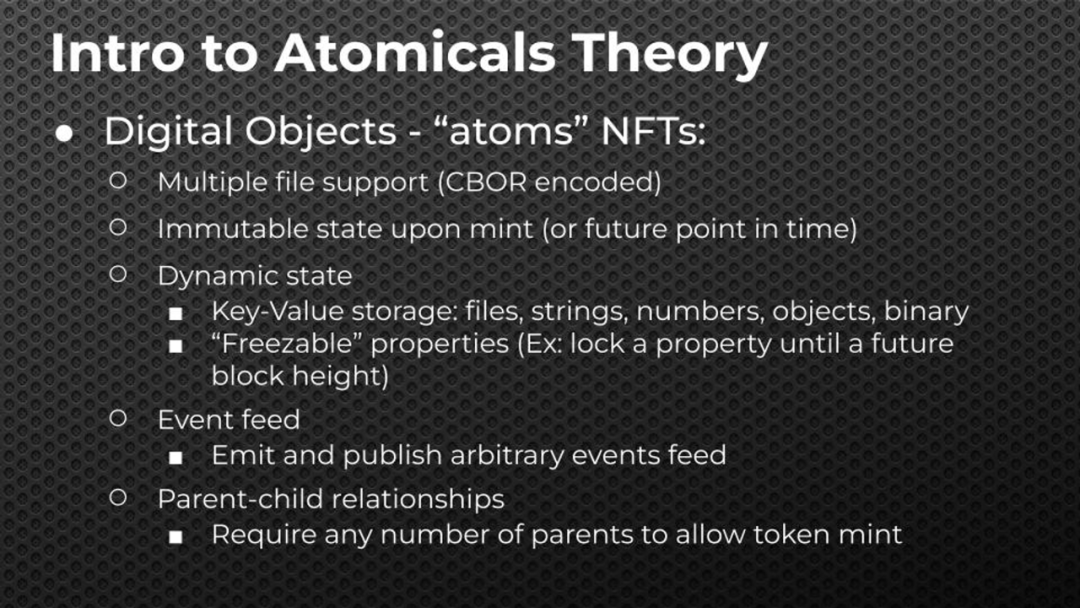
Source: https://twitter.com/atomicalsxyz/status/1702867266008719582
2️⃣BitWork - Micro Proof of Work (PoW)
The most interesting improvement in the Atomicals protocol is the inclusion of a CPU computation step in the token minting process, known as BitWork. Minters must calculate a hash value that matches specific prefix characters through exhaustive computation before they can mint.
PoW can make token minting relatively fair, injecting value from energy and time, as well as introducing a random luck factor.
Unlike traditional PoW algorithms with high computational difficulty, BitWork adjusts mining difficulty in a fine-grained manner by changing the prefix matching method. It can add a number between 1 and 15 after the prefix, such as "7777.1" or "7777.15," or any number in between, indicating the range of variation allowed for that character.
The working principle is that the number after the "." is a semi-wildcard, used to match any fifth character starting from that number. For example, in "7777.10," the first 4 characters of the txid (in hexadecimal) must be "7777," and the fifth character can be the number 10 (in hexadecimal) or any number higher.
So, the 5th digit can be a, b, c, d, e, or f. This allows the system to choose a range of 2 to 16 times the difficulty increase, rather than just 16 times, each time the difficulty increases.
BitWork also brings some novel use cases:
- Ranking content based on energy consumption
- Organizing a related community through consensus when you have a very cool reference or prefix
- Adding a random luck factor in the minting process
- Organizing communities around vanity TXIDs and REFs
- Content ranking based on costly signal theory
- Throttling and limiting token minting - spam filter
3️⃣Container NFTs - NFT Standard
Container is a standard for representing collections of NFTs and metadata. It can be used to add/modify/remove content for any protocol such as Atomicals, Ordinals, and Bitmaps, and can also choose to permanently "seal" the content by locking it in a container and destroying the "key" that can open the container, thereby maintaining the sealed state and preventing modifications.
Container Naming Service:
- Container names start with a hashtag symbol and each name is unique and non-repeating, following a first-come, first-served approach during minting
- The length of the name is between 3-64 characters, and BitWork is used to slow down the registration speed of container names
- Example container names: #bitcoin-funks, #gemini-warriors, etc.
4️⃣ARC20 - Colored Coins
The Atomicals protocol uses the smallest unit of Bitcoin, sat, as the basic "atom," where each sat's UTXO represents the balance of the token itself, with 1 token equaling 1 sat.
ARC20 is a colored coin model, where registration information is recorded in transaction scripts. By binding information to UTXOs, token programmability and decentralization are enhanced, and transaction security is ensured by the BTC mainnet. There is no need for any off-chain systems to calculate ARC20 token balances, as the token balance is consistent with the number of sats in the UTXO. This is the biggest difference from the BRC-20 protocol.
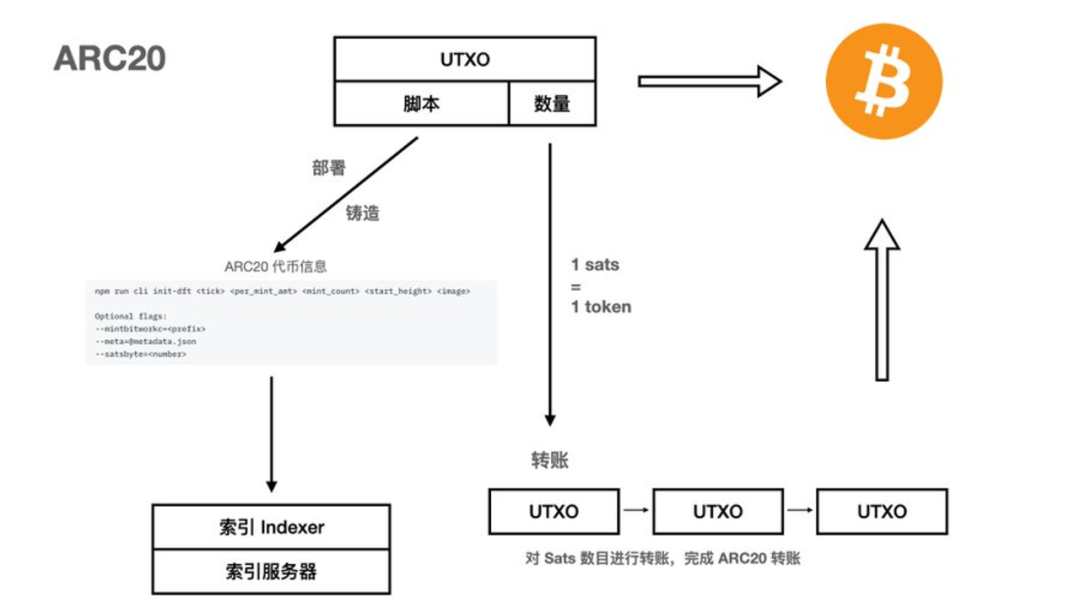
Source: https://twitter.com/blockpunk2077/status/1725513817982136617
- When deploying ARC20, information such as token name, total supply, quantity limit, difficulty setting, starting block, image, etc., is required.
- When minting ARC20, users write the token name into the script of the UTXO, and the quantity is directly determined by the number of sats in the UTXO, where 1 sat = 1 token.
- When transferring ARC20, users do not need to deposit any data into BTC, they only need to use the UTXO holding the tokens as transaction inputs and output them to another address.
For ARC20, we only need an index to help us read the token registration information and identify mint transactions to confirm which UTXOs are ARC20.
The benefits of this approach include:
- Greatly reducing the cost of index servers, making it possible for almost anyone to create their own index server, resulting in a high degree of decentralization
- Transfers rely entirely on the BTC network, avoiding the creation of redundant transactions, and the security of ARC20 transfers is guaranteed by BTC
- Consistency in atomicity between ARC20 and BTC, suitable for implementing many native applications
- When deploying ARC20, information such as token name, total supply, quantity limit, difficulty setting, starting block, image, etc., is required.
- When minting ARC20, users write the token name into the script of the UTXO, and the quantity is directly determined by the number of sats in the UTXO, where 1 sat = 1 token.
- When transferring ARC20, users do not need to deposit any data into BTC, they only need to use the UTXO holding the tokens as transaction inputs and output them to another address.
Of course, the design of colored coins also brings some disadvantages, as the balance is not written into the data but is bound to sats, so the minimum split precision of ARC20 balance is 1.
This also means that, due to the BTC mainnet's minimum transaction limit of 546 sats to prevent dust attacks, users are currently unable to conduct fine-grained transactions. However, the Atomicals protocol has already provided a specific splitting plan and is actively under development.
Here's a diagram to illustrate the fundamental differences between BRC-20 and ARC20:
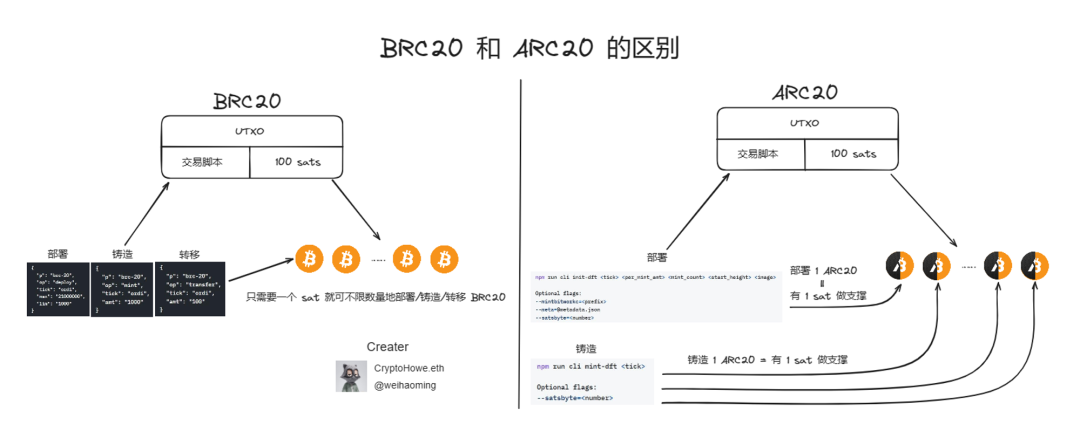
5️⃣Realm Name System (RNS) - Domain Name System for Realms
RNS claims to be a true competitor to the DNS domain name system, aiming to be a global alternative to DNS and other blockchain domain name systems.
Realm Names are human-readable identifiers used to associate network addresses and resource information. Realm names start with a plus sign (+) and must have at least one letter character, for example, +alice and +agent007, both of which are valid names (top-level - Realm Name System (RNS) domains or TLR).
Realm names are directly owned and managed on the Bitcoin blockchain using the atomic digital object format, essentially meaning there are no intermediaries or centralized registrars.
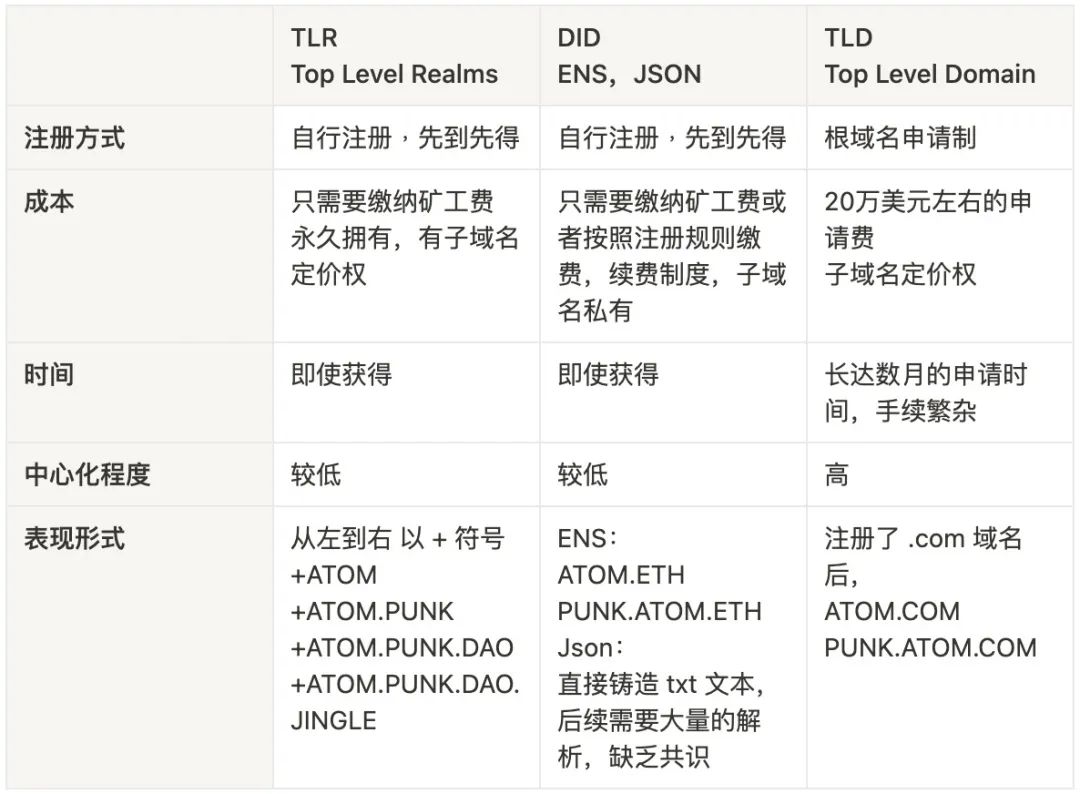
6️⃣Subrealm Minting - Subrealm Tokenization
Managing and tokenizing communities by issuing subrealms (Subrealm) under any realm (Realm), with specific rules as follows:
Here's a simple example:
In addition, Subrealms can also be used for social media organization, identity verification, loyalty rewards, and more.
- First, we register a realm +ATOM
- When we want to create a community about Punk NFTs under this realm, we can create a subrealm +ATOM.PUNK based on the +ATOM realm
- Later, if we want to establish a DAO in the Punk community, we can create another subrealm +ATOM.PUNK.DAO
- Each person in the DAO is assigned a DID, so a subdomain +ATOM.PUNK.DAO.JINGLE can be created
- Any realm or subrealm can issue subrealms
- All subrealms can inherit the same characteristics and issue their own subrealms based on the subrealm
- Everyone is the registrant of the realms they own, and there are no centralized institutions
Protocol Features
Based on the atomic theory mentioned above, the main features of the Atomicals protocol include:
- Using satoshis as the basic unit to represent tokens
- Allowing the creation, transfer, and updating of digital objects on Bitcoin
- Providing a decentralized and Bitcoin-culture-compliant tokenization method
- Increasing fairness and decentralization in the minting process through proof of work (POW)
- Aimed at expanding the functionality of Bitcoin to support a wider range of applications
Key Differences from Other Protocols
The best way to understand the differences of the Atomicals protocol is to compare it with other popular NFT protocols:
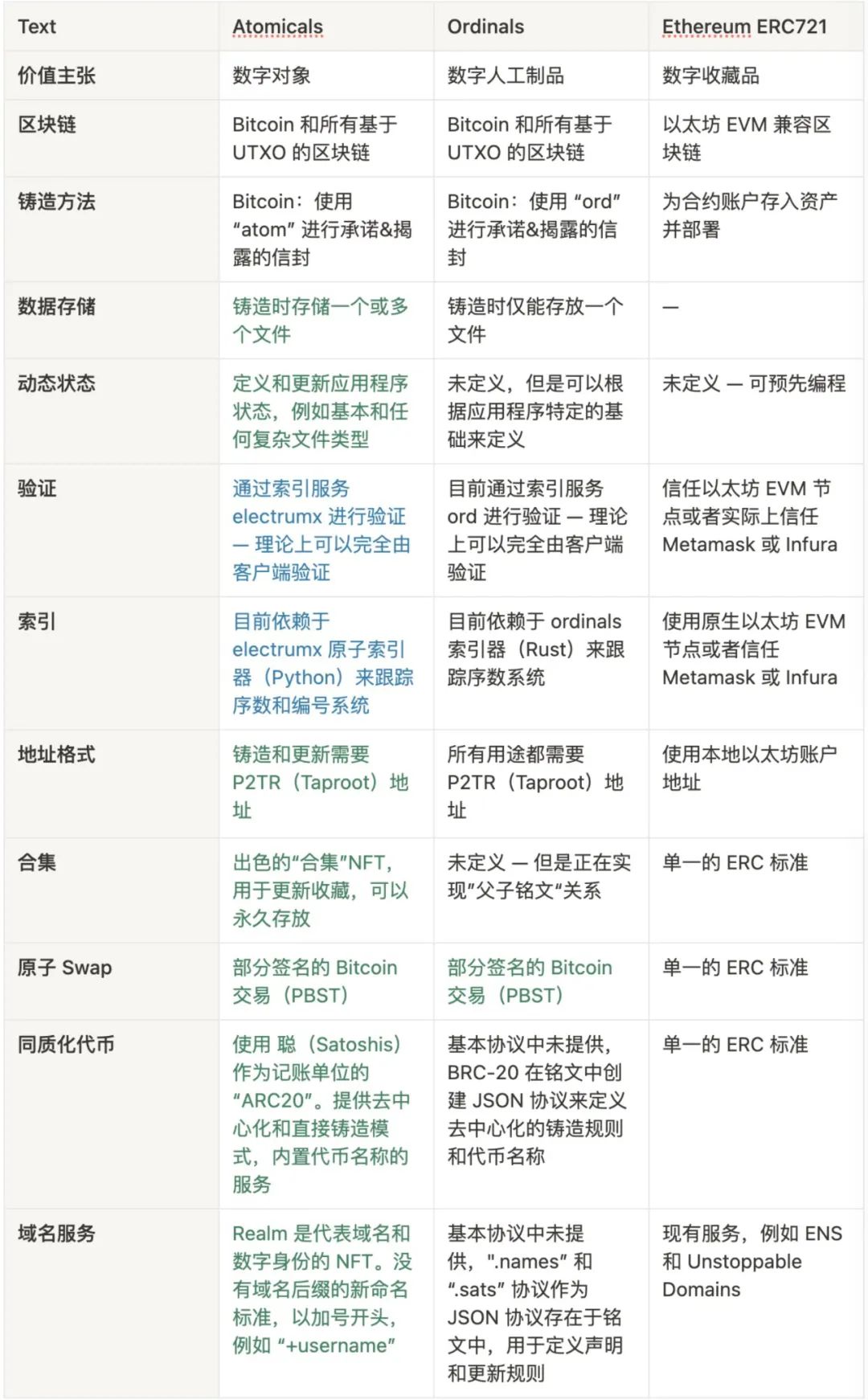
「4」Bitmap Protocol
Protocol Proposal
Bitmap.land is the first metaverse project in the Bitcoin ecosystem, based on the Ordinals theory and Bitmap theory.
The Bitmap theory was proposed by Twitter user @blockamoto on 2023.6.5.
This theory maps each transaction input in a Bitcoin block to a parcel, forming a block or district. The size difference of different transaction inputs results in different sizes of mapped parcels.
Source: https://share.foresight-news.com/article/detail/48677
In the Bitcoin blockchain, each block is divided into four parts to represent different halving periods. Users can view the block number and color of each block on the Bitmap.land website, where different colors represent different selling statuses.
Bitmap.land's sale is closely related to the Ordinals theory, similar to how the virtual land sales in Decentraland and The Sandbox rely on the ERC-721 standard. While the Ordinals theory is similar to the early principles of colored coins, there are differences between the two in the current narrative, consensus, ecosystem, and infrastructure of Bitcoin. Although the Ordinals theory is not as innovative as ERC-721, the approach of BRC-20 is more primitive.
The Bitmap theory provides a new interpretation for Bitcoin blocks, offering a topicality despite lacking practicality. It changes the connection between Bitcoin and the metaverse by allowing users to own and record individual blocks, providing a new dimension to each block of the Bitcoin blockchain and making it part of the metaverse.
The Bitmap theory has attracted attention from the Ordinals community and sparked a craze for inscriptions. Any block on the Bitcoin blockchain can become part of the metaverse through Bitmap, bringing new opportunities for creativity and ownership to the community.
Bitmap.land blurs the boundaries between Bitcoin and the metaverse, paving the way for ownership, creativity, and community development. As the craze for inscriptions continues, this represents enormous potential for those seeking to establish a presence in the digital realm.
Interested individuals can visit the official browser to explore various Bitmaps: https://bitmap.game/
「5」BRC-100 Protocol
Protocol Proposal
As we all know, protocols based on Bitcoin such as Ordinals protocol and BRC-20 have brought great imagination to the development of the Bitcoin ecosystem through the "on-chain declaration, off-chain resolution" mechanism. While a large number of Bitcoin NFTs and tokens have been issued, the development of decentralized applications such as DeFi still lags behind. Therefore, Mikael.btc released a protocol that supports decentralized computing on September 2, 2023: BRC-100.
https://twitter.com/MikaelBTC/status/1697930690653036895
Protocol Introduction
BRC-100 is an extension protocol based on the Ordinals theory, designed specifically to implement various decentralized applications on the Bitcoin Layer 1. This protocol not only inherits the basic functions of BRC-20 on Bitcoin, such as creation, minting, and trading, but also introduces the concept of decentralized computing.
This means that based on the BRC-100 protocol stack, various decentralized applications such as DeFi, SocialFi, and GameFi can be developed, bringing truly decentralized, trustless, censorship-resistant, and permissionless application scenarios to the first layer of Bitcoin.
A major feature of the BRC-100 protocol is its interoperability. It not only allows all protocols and applications within its protocol stack to be mutually compatible, but also supports interaction with BTC, BRC-20, or other Layer 1 chains such as Ethereum and Stacks. In addition, the protocol introduces the UTXO model and state machine model, enhancing its security and computing capabilities.
Protocol Features
Because the BRC-100 protocol is an extension of the Ordinals theory, it inherently possesses all the features of BRC-20 while also introducing some innovative features:
Provinces: This means that various extensions such as airdrop protocols, governance protocols, relay protocols, etc., based on the BRC-100 protocol, can be understood as Mikael's desire to introduce various DeFi gameplay into BTC.
- Protocol Inheritance
The BRC-100 protocol introduces the concept of inheritance. Protocols directly or indirectly inherited from BRC-100 are called BRC-100 extension protocols. BRC-100 extension protocols must only inherit from one protocol. Extension protocols inherit the attributes, operations, and computational operations of the parent protocol, and can only extend attributes and computational operations.
This is similar to when making ceramics, initially it's just a clay embryo, but gradually, through polishing and shaping, it gradually gains more extended functions such as decoration and storage.
- BRC-100 Protocol Stack
The BRC-100 protocol and all its extension and improvement protocols are collectively referred to as the BRC-100 protocol stack. Based on this protocol stack, all tokens/applications can be mutually compatible, meaning a token/application can be used anywhere other applications are used.
- Protocols and Applications
In the BRC-100 protocol stack, protocols are standards that describe the attributes, operations, and computational operations of applications. Applications are instances created after the protocol is deployed to the Bitcoin network through inscriptions.
Applications are essentially tokens with computational capabilities and states. The protocol details the computational capabilities of applications. Without adding sub-applications, applications cannot have computational capabilities not described in the protocol. Added sub-applications can only have the computational capabilities of the protocol, otherwise the public indexer cannot verify the state of the application, leading to inconsistency between the user and the application's state.
- Application Nesting
Applications deployed based on the BRC-100 and its extension protocols can be nested, meaning one application can create another application, called a sub-application, under it.
The ticker of the sub-application starts with the "parent application ticker:". One application can create multiple applications under it, completing multiple independent computational logics. For example, in the classic AMM DEX scenario, multiple LP sub-applications/tokens need to be created in a DEX application, such as "amm_dex:LP_BRC100_BTC".
- Application State and Addresses
In addition to the UTXO model, the BRC-100 protocol also introduces the state machine model to extend the computational capabilities of the protocol.
Applications, sub-applications, and addresses can all have states. For example, an application can hold tokens, and an address can have a balance in the application. The transition between UTXO and state is completed through the burn2/burn3 and mint2/mint3 instructions.
Computational operations (cop) are used to represent specific computational logic, i.e., the transition of the state of applications and addresses. For example, address A burns 10 token1 to the application through the burn3 inscription. At this point, the application owns this UTXO and 10 token1. The application can change the internal state of any address or application through its computational logic to allocate these 10 token1. Then the address or application that owns token1 in the application can mint it through the mint3 instruction.
- Permissions
The BRC-100 protocol introduces two roles: owner and administrator.
The address with the inscription for deploying the application is called the owner. The owner can track the transfer of UTXOs with the inscription for deployment. All owners of sub-applications are owners of the parent application.
Administrators are managed by the owner and cannot manage other administrators. The permissions of owners and administrators are strictly limited. They cannot review users, only govern applications that have not started DAO, and complete mint2/burn2 computational operations.
Administrators can be addresses, applications, or sub-applications. Applications and sub-applications are mutually administrators by default, without additional settings, but sub-applications are not administrators of each other.
The burn2/burn3 inscription needs to be sent to the deployer of the application to be processed correctly. The "mint2" instruction for minting part of the tokens can only be allocated by the logic of the application/sub-application, and the application/sub-application needs to be the administrator of the token. The "burn2" instruction has a similar logic. The burn2/burn3 inscription needs to be sent to the deployer of the application to be processed correctly based on the logic of the computational operation.
- Decentralized Governance of Applications
The BRC-100 protocol stack introduces the governance protocol: BRC-101, which can govern applications that implement the standards of BRC-100 or its extension protocols. When applications start DAO, governance is completed through decentralized voting.
Application governance includes: updating the attributes of applications and sub-applications, deploying sub-applications, and stopping applications. Application governance is on-chain governance. After on-chain voting, governance should be automatically executed by the application after being notified by the "egov" computational operation, following a time lock.
- Deploying Applications/Tokens
In the BRC-100 protocol, there are two ways to deploy applications: one is to directly deploy using deployment instructions, and the other is to deploy through the governance protocol: BRC-101.
The first is used to deploy parent and sub-applications that do not require governance configuration, while the other is used to deploy sub-applications that require governance.
- Minting Tokens
The BRC-100 protocol provides three minting instructions: mint, mint2, mint3, used for minting tokens in different scenarios.
When deploying an application, the user needs to set the number of tokens that can be minted (using the "mint" instruction). The remaining tokens will also be minted using the "mint" instruction.
"Mint": User minting, fair minting, anyone can mint tokens for the user, but the total amount minted by the "mint" operator cannot exceed the "max" and "mma" properties set by the application. After minting, the circulating supply of tokens will increase.
"Mint2": Whitelisted minting, the application records the number of users or applications that can mint tokens, and anyone can mint tokens for users or applications under the application's rules. After minting, the circulating supply of tokens will also increase.
"Mint3": Treasury minting, mint3 for the balance of users or applications in other applications, anyone can mint tokens for users or applications under the application's rules. After minting, the circulating supply of tokens will not increase.
- Burning Tokens
Burning is a new operation introduced by the BRC-100 protocol. Users can inscribe the burn operation and then transfer the inscription to the deployer of the application, similar to the semantics of the transfer operation. The inscribed tokens will then be burned or transferred to the balance of the application.
Similar to the definition of the mint operation, the burn operation also has 3: burn, burn2, burn3, logically corresponding to mint, mint2, mint3. No additional configuration is required, and all applications/tokens support these three burn instructions.
"Burn": Public burn, anyone can use the instruction to burn tokens. After successful token burning, the circulating supply will decrease, and the burned tokens cannot be minted again.
"Burn2": Whitelisted burn, according to the preset rules of the application, when burning tokens to the application, the user's balance will decrease, and the application's state will be updated accordingly, reducing the circulating supply. In practice, logic such as removing liquidity in AMM DEX can be achieved through burn2.
"Burn3": Treasury burn, burn3 will reduce the user's token balance and increase the balance of the "to" application. In practical applications, it can be used in conjunction with mint3 to complete logic such as exchanging tokens and adding liquidity in AMM DEX.
- Transaction Tax and Monetary Contraction
The BRC-100 protocol introduces a new token transaction mechanism: transaction tax and monetary contraction. Applications can set the percentage of transaction tax, the tax recipient, and the percentage of transaction black hole. These settings only take effect when trading on AMM-based decentralized exchanges. Normal transfers, minting, and burning operations do not trigger transaction tax and monetary contraction.
- Computational Operations
Computational operations are the extended computational behaviors of the BRC-100 protocol. They are represented by the "cop" attribute and are the smallest unit of protocol computational capability. When used with the op operator: burn2/burn3/mint2/mint3, they can be understood as state transition functions, defining how the state of applications and users is updated under the corresponding op operator.
- Oracle Oracle
Oracle is a common requirement for blockchain to interact with off-chain parties, and has been well implemented and applied on blockchains such as Ethereum. If there is no oracle, smart contracts on the blockchain will be completely limited to on-chain data. However, compared to the blockchain, the BRC-100 protocol has very special characteristics.
It not only has the computational capability of the blockchain, but also relies on off-chain indexers to complete computations. At the same time, off-chain indexers can directly communicate with other blockchains or meta-protocols, which the blockchain cannot do. This means that indexers can verify any data on-chain or off-chain to meet the requirements of the Oracle BRC-100 protocol through sufficient proof data.
For example: verifying the transfer of BTC or BRC-20 assets, verifying the price of ETH on a certain block in Ethereum, and so on.
In other words, in the BRC-100 protocol, the oracle has a new paradigm: proof and verification, where users submit proof data, and the indexer acts as an Oracle Verifier to verify the proof data submitted by the user, without the need for independent Oracle services.
In the BRC-100 protocol, the burn2/burn3/mint2/mint3 instructions natively support the proof attribute for submitting proof data. Indexers can verify the proof data to ensure the consistency and correctness of the state. The proof can be transfer proof, Merkle tree proof, zero-knowledge proof, price proof, etc., and can be used for asset bridging, airdrops, Bitcoin Layer 2, lending liquidation, and more.
- Relay Protocol
Meta-protocols on Bitcoin are heterogeneous and cannot communicate with each other. Different protocols are similar to different blockchains, sharing the security of the Bitcoin blockchain and having different computational capabilities. In addition, meta-protocols cannot directly communicate with other blockchains, such as Ethereum, and cannot use assets on other blockchains.
Therefore, the BRC-100 protocol stack needs relay protocols to facilitate communication between Bitcoin, meta-protocols, blockchains, and the BRC-100 protocol, bridging assets from other protocols or blockchains to BRC-100, and participating in decentralized applications such as DeFi. Due to the diversity of protocols and blockchains, BRC-100 will have multiple relay protocols.
First, we will release: BRC-103, responsible for bridging assets between Bitcoin, BRC-20, and BRC-100. When transferring assets from a meta-protocol or blockchain (source) to the BRC-100 protocol (target), in order for the indexer to verify the correctness of the transfer, proof data needs to be submitted using the "mint2" instruction, known as transfer proof. Transfer proof refers to submitting transfer data from the source end (such as Bitcoin, BRC-20, or other blockchains) when minting anchored assets on the target protocol (BRC-100), such as transaction hashes or inscription IDs. This allows all BRC-100 indexers to verify the correctness of the minted anchored assets.
Transfer Proof is a very important application of the Oracle BRC-100 protocol.
Protocol Use Cases
Since BRC-100 is an extension of BRC-20, it inherently has all the use cases of BRC-20, but the use cases of BRC-100 go far beyond that. We can still further extend the BRC-100 protocol. The following are some extension protocols officially listed, and some protocols are under development:
- BRC-101 (Released)
Decentralized on-chain governance protocol for the BRC-100 protocol stack, defining how to update the attributes of parent/sub-applications/tokens, stop applications, and add sub-applications.
Additionally, BRC-101 can also complete off-chain governance through decentralized voting.
- BRC-102 (Under Development)
Automated liquidity protocol, defining how to exchange tokens of the BRC-100 protocol stack through an automated market maker (AMM) algorithm. The computational logic will be similar to Uniswap on Ethereum.
- BRC-103 (Under Development)
Relay protocol between BTC, BRC-20, and BRC-100. Meta-protocols on Bitcoin are heterogeneous and cannot communicate with each other. Different protocols are similar to different chains. They share the security of the Bitcoin blockchain and have different computational capabilities.
Therefore, the BRC-100 protocol stack will release multiple relay protocols to facilitate communication between meta-protocols, different chains, and BRC-100, bridging assets from other protocols and blockchains to BRC-100, and participating in DeFi and other DApps.
- BRC-104
Liquidity mining protocol, defining how to earn token rewards after staking tokens.
Staked tokens can be any token based on BRC-100, such as liquidity pool tokens from the BRC-103 protocol, and can also be the same as the reward token. Additionally, BRC-104 will support lock-up periods to lock the staked tokens.
- BRC-105
Airdrop protocol, defining how to efficiently airdrop tokens to multiple addresses.
The protocol will use Merkle Tree to complete the airdrop, saving transaction fees, as all original airdrop data does not need to be publicly available on Bitcoin. When using "mint2", users only need to submit a Merkle Proof to prove their ownership of the airdrop, and all indexers can verify the correctness to complete the airdrop.
- BRC-106
Decentralized stablecoin pool protocol, defining how to generate stablecoins through collateral.
The computational logic will be similar to MakerDAO's DAI on Ethereum.
- BRC-107
Lending pool protocol, defining how to borrow assets through collateral.
The computational logic will be similar to Aave on Ethereum.
- BRC-108
Automated liquidity protocol for stablecoins.
- BRC-109
Decentralized trading protocol for perpetual futures.
- BRC-110
Relay protocol between EVM-compatible blockchains and BRC-100, defining how to bridge assets from EVM-compatible blockchains to BRC-100.
- BRC-111
Bitcoin Layer 2 verification protocol, defining how to verify Bitcoin Layer 2 proof data similar to Ethereum's Layer 2 smart contracts.
「6」BRC-420 Protocol
Protocol Proposal
After the proposal of the BRC-20 protocol, another new experimental protocol, BRC-420, also known as the Metaverse protocol, appeared on September 19, 2023.
https://twitter.com/rcsvio/status/1704118288845013117
Protocol Concept
BRC-420 is an interesting experiment. It is the first Metaverse protocol in the Ordinals protocol and is an asset protocol based on the Bitmap protocol.
By combining multiple inscriptions into a complex asset, such as game items, animations and effects, or game modules in the Metaverse, it creates a variety of assets from small characters and pets to complete game scripts and virtual machines.
Due to its on-chain open-source nature, these assets can be run or verified by any client, fully embodying the "Client Agnostic" spirit of the entire chain game.
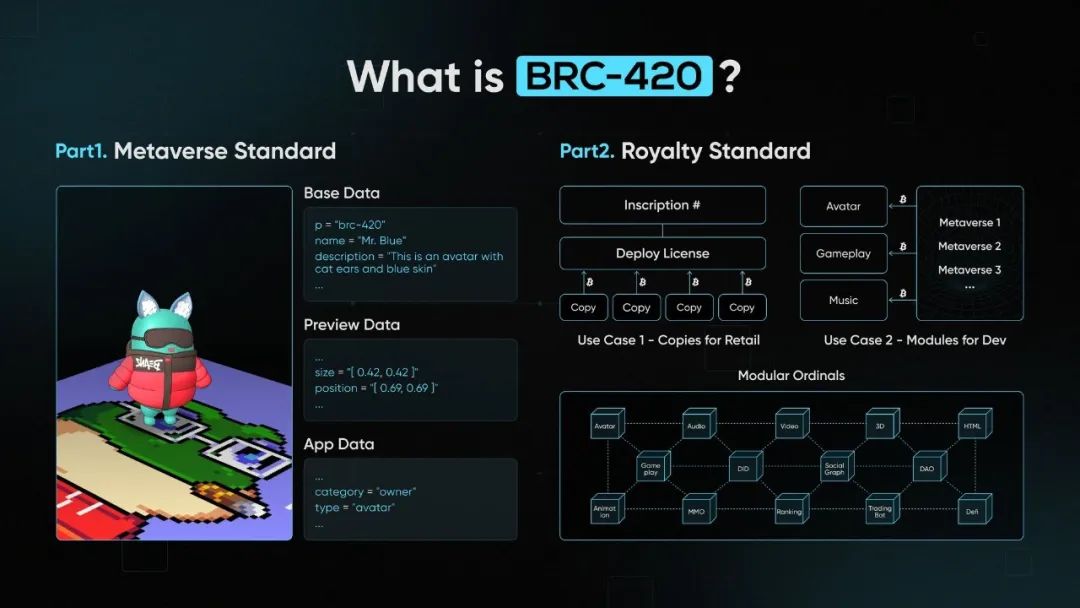 Source: https://twitter.com/rcsvio/status/1704118288845013117
Source: https://twitter.com/rcsvio/status/1704118288845013117
The BRC-420 protocol consists of two parts: the Metaverse Standard, which defines open formats for assets in the Metaverse, and the Royalty Standard, which sets up on-chain protocols for creator economics.
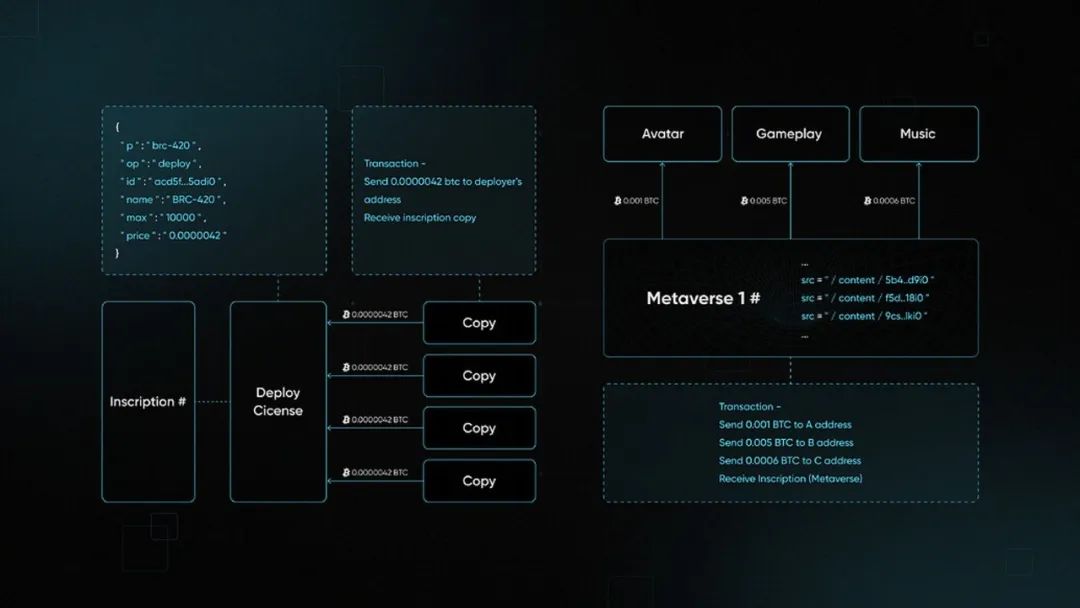 Source: https://l1f.discourse.group/t/brc-420-introduction-to-brc-420/88
Source: https://l1f.discourse.group/t/brc-420-introduction-to-brc-420/88
BRC-420 opens up possibilities for the Ordinals on-chain game and modular blockchain. Different creators can contribute different modules, and new creators can innovate on the basis of previous innovations. This has led to a surge of various innovations within the Ordinals ecosystem, benefiting all participants.
Protocol Development
Currently, on November 3, 2023, BRC-420 DLC was released, which can integrate thousands of meta-inscriptions into one DLC. After deployment, users can obtain thousands of meta-assets in one minting.
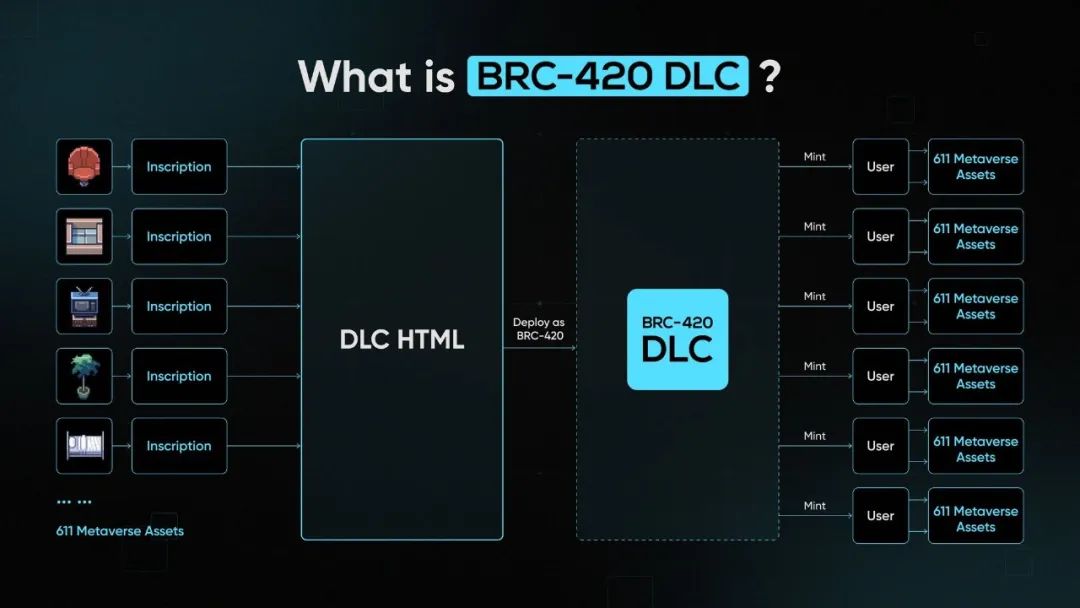 Source: https://twitter.com/rcsvio/status/1720444100124831867
Source: https://twitter.com/rcsvio/status/1720444100124831867
「7」Runes Protocol
Protocol Proposal
After the release of the BRC-20 protocol, Casey felt that creating homogeneous tokens on Bitcoin was not a good idea, as 99% of homogeneous tokens are scams and will not disappear in the short term. Creating a good homogeneous token protocol for Bitcoin may bring substantial transaction fee income, developer attention, and users to Bitcoin.
Therefore, on September 26, 2023, Casey proposed the Runes protocol based on UTXO technology.
https://twitter.com/rodarmor/status/1706438248606904382
The design of the Runes protocol may also be influenced by ARC20, choosing to directly write token data into the script of UTXO, including the token's ID, output, and quantity.
Obviously, the implementation of Runes is very similar to ARC20, directly handing over token transfers to the BTC mainnet. The difference is that Runes writes the token quantity into the script data, giving it higher precision than ARC20.
However, the complexity also increases, making it difficult to directly utilize the composability of BTC UTXO like ARC20.
Protocol Development
After the release of the Runes protocol, due to Casey's main development focus still being on the Ordinals protocol, the development of the Runes protocol has been relatively slow. This is also why Benny quickly developed the Pipe protocol after the release of the Runes protocol.
During the Taiwan Blockchain Week in December, Casey also announced the launch of the Runes protocol on the mainnet at an event in Taipei, at block height 840,000, which is around the next BTC halving in late April 2024.
#Summary
After researching the BTC asset issuance solutions, I also fully appreciate their charm, so I will also share some of my subjective opinions:
- The issuance of BTC assets has ignited the explosive development of the BTC ecosystem this year, although opinions about them vary. But abstracting the development of the BTC ecosystem, it cannot do without an important thing - "narrative".
As I mentioned in my previous thoughts, a product needs a good narrative to support it, otherwise it is easy to face the embarrassing situation of having a product but no users. The various asset issuance solutions have also proven this point, such as the first is first, the various imaginations brought to the ecosystem by the protocol, and the official endorsement, all of which are specific manifestations of the narrative.
- Similarly, we cannot deny the contribution of this wave of asset issuance to the BTC ecosystem. Although from a technical perspective, most asset issuance solutions may not have made substantial breakthroughs in the limitations of Bitcoin, they have not only provided a rare stress test for various major public chains but also brought some possible development paths for the future of Bitcoin.
Through the wave of inscriptions this year, the long-tail effect brought about by inscriptions has gradually expanded from Bitcoin to other public chains. And with the popularity of inscriptions among the public, we have also felt some shortcomings of the current Bitcoin mainnet, such as high gas fees, slow transaction speeds, and so on, indicating the necessity of BTC scalability solutions.
- Although scalability solutions have been in the works for a long time, they have been lukewarm. Now, more and more users are paying attention to the BTC ecosystem due to the wave of inscriptions, indirectly accelerating the development of BTC scalability solutions.
Currently, existing scalability solutions are mainly divided into three categories: sidechains/lightning network/native L2. However, no direction has established a leading advantage, and they are still in a phase of competing with each other. Whether there will be multiple breakthroughs or a single direction that stands out in the future is something we can look forward to, and it is also a direction that can be focused on in the future.
- In the research of asset issuance solutions, there is a clear trend from the initial appearance of the Ordinals protocol to the later BRC-20, an improved protocol based on Ordinals, and then to protocols such as BRC-100, a decentralized computing protocol (aiming to continuously expand and introduce DeFi gameplay into Bitcoin), BRC-420, a Metaverse protocol (bringing the possibility of introducing games, music, etc., into Bitcoin), ARC-20 (a new asset issuance solution parallel to BRC-20), and so on.
Asset issuance solutions have evolved from making basic improvements to existing asset issuance protocols to addressing the needs of the BTC ecosystem (such as oracles, DeFi, games, etc.) based on a certain asset issuance protocol, making large-scale ecological layouts, or even releasing a new type of asset issuance protocol to establish rules.
- The development of the BTC ecosystem is still in its early stages, whether in Web2 or Web3, there is a phenomenon that whoever first grasps the right to set the rules will have the users. Therefore, there are still many opportunities for wealth at present. We must comprehensively consider the development of the BTC ecosystem. The wave of inscriptions will eventually cool down, and we should not only focus on the tail of asset issuance but also consider how to accelerate the development of the entire BTC ecosystem in other aspects through asset issuance.
Of course, there are also different opinions on this matter, such as NingNing's view on BTC L2: [link to tweet], which is a rational discussion.
- Although we are currently in a stage of acting first and studying later, everyone is still making decisions based on their instincts. However, it is important to remind everyone to be cautious about risks when investing, and to clearly define your own investment logic, whether it is for short-term gains or long-term prospects. Different logic leads to different strategies. When it comes to investment, it is important to strive for unity of knowledge and action. I firmly believe in the saying, "You will never make money beyond your understanding. Even if you make money now, you will spit it out later."
Finally, thank you for reading this far. The original intention of this article is to provide a better and more comprehensive understanding of the development of the BTC ecosystem, and I welcome any thoughts or direct interaction.
Author: Howe
Editing & Formatting: Cikey
Design: WangTeng
免责声明:本文章仅代表作者个人观点,不代表本平台的立场和观点。本文章仅供信息分享,不构成对任何人的任何投资建议。用户与作者之间的任何争议,与本平台无关。如网页中刊载的文章或图片涉及侵权,请提供相关的权利证明和身份证明发送邮件到support@aicoin.com,本平台相关工作人员将会进行核查。




